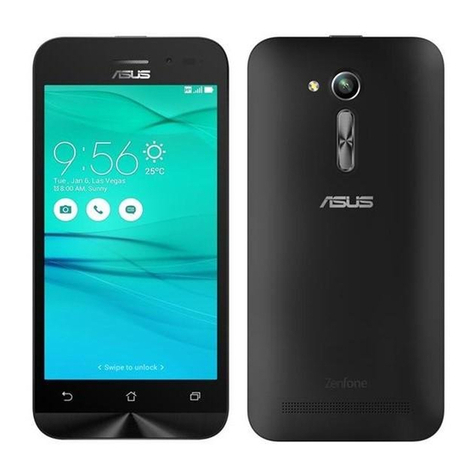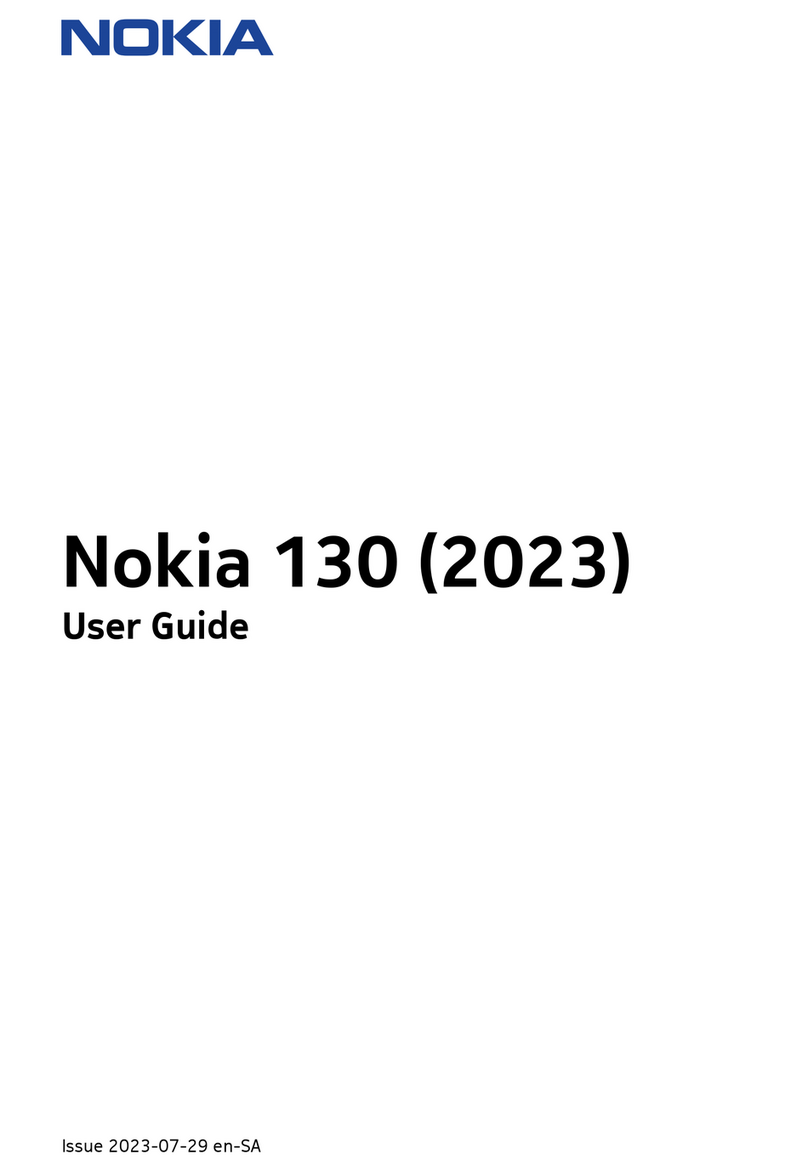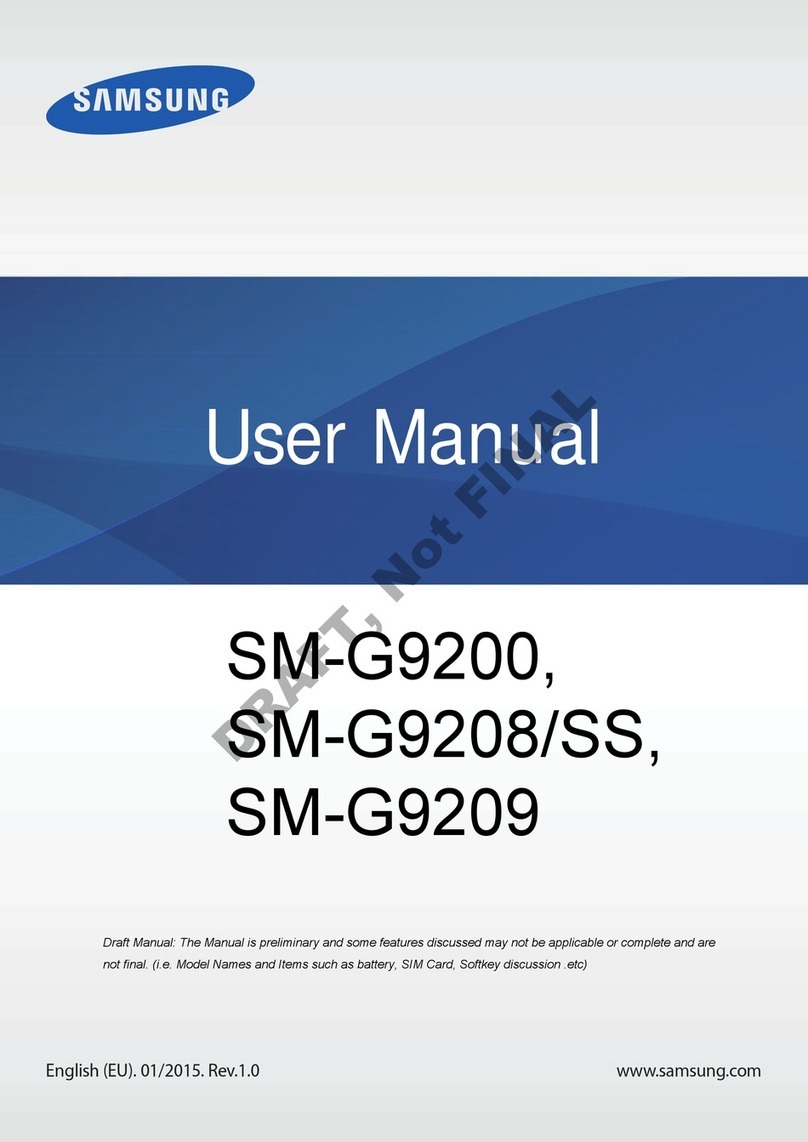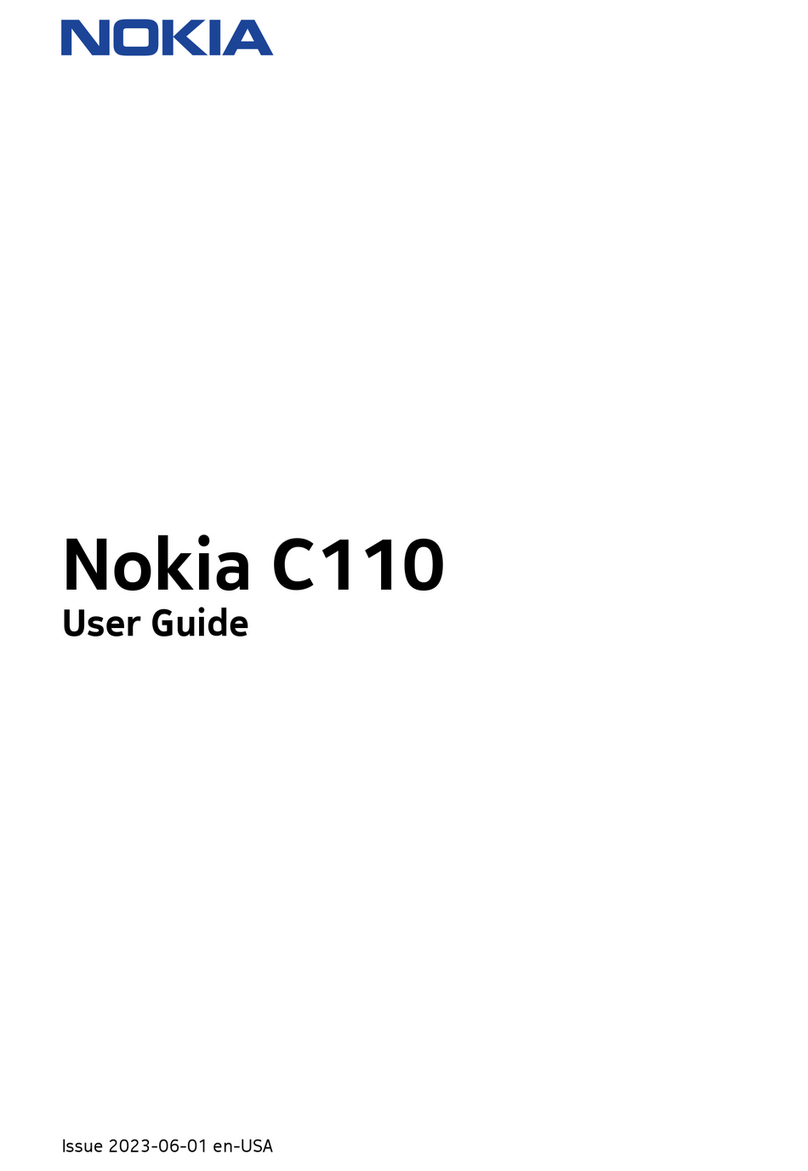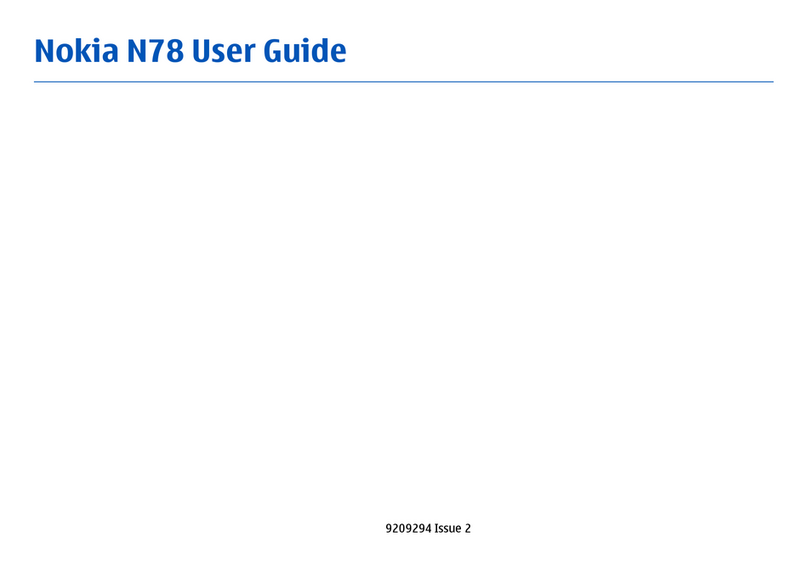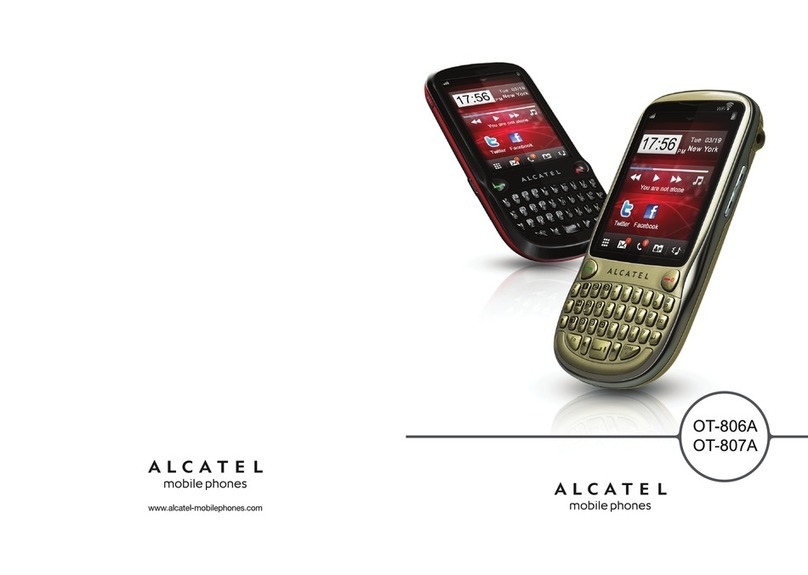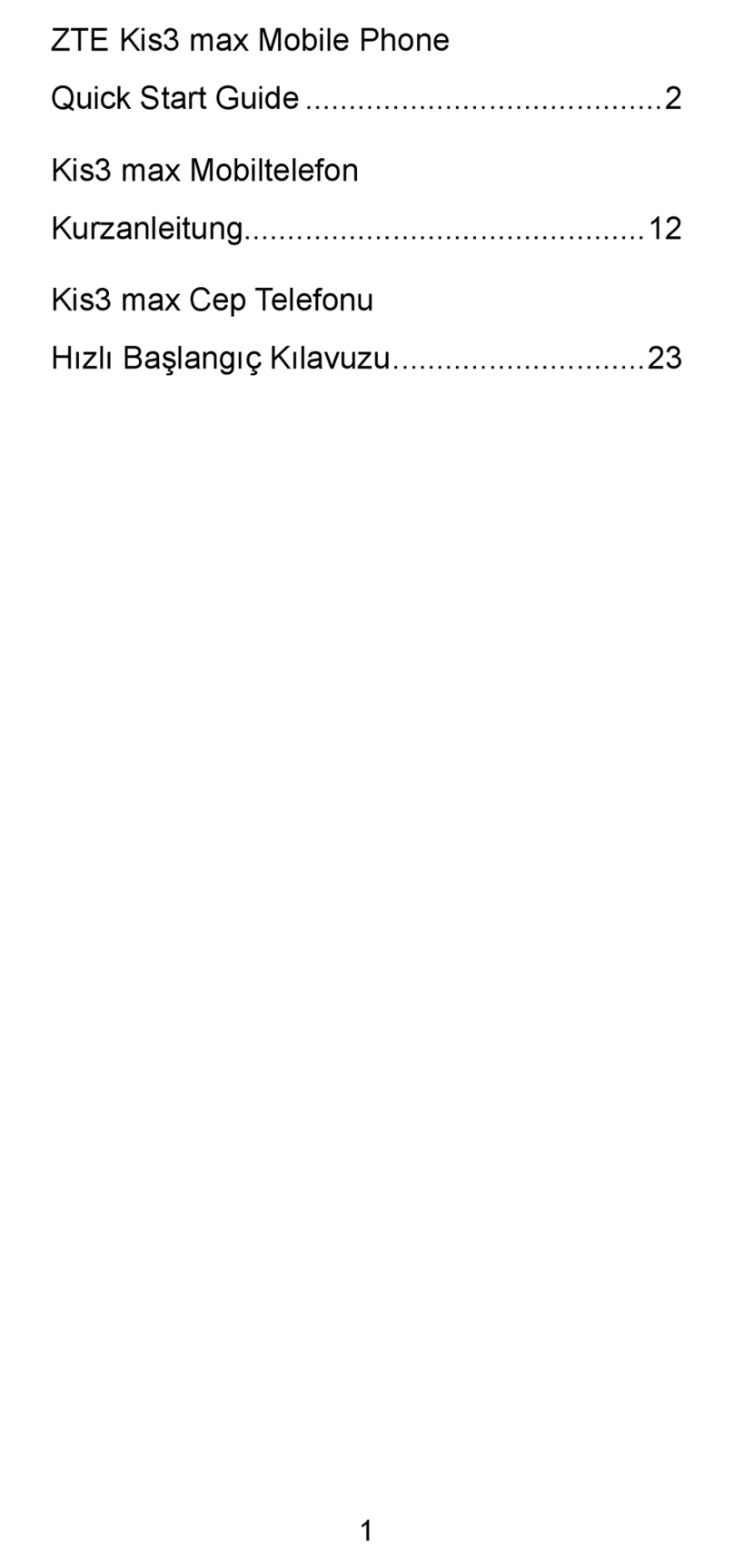Techfaith ROCK Operating instructions

1
ROCK
REPAIR MANUAL
1General -------------------------------------------------------------------------------------------------------- 3
1.1 The purpose of the manual ---------------------------------------------------------------------------- 3
1.2 General safty notice ------------------------------------------------------------------------------------ 3
2Summarize---------------------------------------------------------------------------------------------------- 4
3Identity and safety------------------------------------------------------------------------------------------- 4
4GSM system theory ----------------------------------------------------------------------------------------- 5
4.1 General -------------------------------------------------------------------------------------------------- 5
4.2 The general concept of honeycomb------------------------------------------------------------------- 5
4.3 GSM introduction--------------------------------------------------------------------------------------- 5
4.4 Servic area----------------------------------------------------------------------------------------------- 7
4.5 GPRS introduction-------------------------------------------------------------------------------------- 8
5ROCK detail schematic circuit introduction----------------------------------------------------------- 9
5.1 RF circuit introduction--------------------------------------------------------------------------------- 9
5.2 Baseband circuit introduction------------------------------------------------------------------------11
5.3 Power management circuit introduction------------------------------------------------------------12
5.4 Peripheral driver circuit------------------------------------------------------------------------------13
5.4.1 Display and camera --------------------------------------------------------------------------------13
5.4.2 LCD backlight and LEDs--------------------------------------------------------------------------14
5.4.3 Switches (keypad)----------------------------------------------------------------------------------15
5.4.4 Audio Subsystem-----------------------------------------------------------------------------------15
5.4.5 Radiogram system----------------------------------------------------------------------------------17
5.4.6 SIM Interface ---------------------------------------------------------------------------------------18
5.4.7 System Connector ----------------------------------------------------------------------------------18
6Mobile measurement fundamentals Introduction----------------------------------------------------19
6.1 Equipment configuration -----------------------------------------------------------------------------20
6.2 EGSM measurement step -----------------------------------------------------------------------------20

2
6.3 DCS measurement step--------------------------------------------------------------------------------21
6.4 PCS measurement step--------------------------------------------------------------------------------22
7Test point-----------------------------------------------------------------------------错误!未定义书签。
8Trouble shooting--------------------------------------------------------------------------------------------23
8.1 Attentions -----------------------------------------------------------------------------------------------23
8.2 Repair equipments and tools -------------------------------------------------------------------------24
8.3 Phone repair--------------------------------------------------------------------------------------------25
8.3.1 Receiver no sound, microphone no voice -------------------------------------------------------25
8.3.2 Incapable power on---------------------------------------------------------------------------------25
8.3.3 LCD abnormal display-----------------------------------------------------------------------------26
8.3.4 Speaker no sound-----------------------------------------------------------------------------------28
8.3.5 Camera abnormal function ------------------------------------------------------------------------28
8.3.6 Mobile can’t identify the SIM card---------------------------------------------------------------29
8.3.7 No vibration-----------------------------------------------------------------------------------------29
8.3.8 Key press no function------------------------------------------------------------------------------30
8.3.9 RF trouble shootin----------------------------------------------------------------------------------30
8.4 schematics ----------------------------------------------------------------------------------------------31

3
ATTENTION
The product must be repaired by the experienced engineers, we will not responsible for the
damage caused by any other person using this manual as instruction to repair products.
The manual owned by Techfaith Beijing, no part may be reproduced except as authorized
by written permission. the copyright and the foregoing restriction extend to reproduction in all
media.
Whilst every care has been taken in the preparation and publication of this document, errors in
content, typographical or otherwise, may occur. If you have comments concerning its accuracy,
please write to:
Beijing Techfaith R&D CO.,LTD.
NO.10A,Tower D2,IT Park, Electronic Town ,Jiu Xian Qiao North Road, Chao Yang
District.
Beijing, China.
P.C: 100015
1General
1.1 The purpose of the manual
The manual is just used for the experienced engineer not the general publication, providing
basic reference for electric and mechanic repairing.
1.2 General safety notice
Products with power should be repaired by the experienced engineer any other
person use this manual to repair product may
cause damage to it. Products have many
capacitors with polarity, which should not
be short and in reverse connected. For fear
damage the ESD sensitive components, Pay

4
attention to ESD protection during
repairing. Don’t use mobile phone on the
airplane. Don’t use mobile phone near
flammable gas or oil.
2Summarize
ROCK mobile phone for Russia support Tri-band, the mobile phone can automatic switch in
GSM900 network and DCS1800 、PCS1900 network. Inter antenna reduce the radiation to body
and more easy to take as well as providing good signal. And it has fashionable 65K double color
screen 、inter antenna 、1.3M inter camera 、MP3 、MP4、MMS and GPRS high speed data
transfer、Bluetooth、FM radio 、color motive game etc functions. There are several difference
between selling in Chinese and Russia. For the detail product feature, please see the Product
Feature document.
3Identity and safety
Each ROCK mobile phone has one identification number IMEI.
IMEI(international mobile station equipment identities) number is saved in the mobile
memory. One IMEI number exclusively represent one mobile equipment, so if changing
mainboard , IMEI number should changed together.
IMEI composition
TAC: type approval code
FAC: final assembly code
SNR: serial number
SVN: software version number

5
4GSM system theory
4.1 General
Below is the basic introduction of Global System for Mobile communications (GSM) cellular
network, which is just a brief introduction. If you want to know the detail technology, please refer
to the GSM_SPEC_PHASE 2+ .
4.2 The general concept of honeycomb
The cellular systems are now using in the EGSM and DCS frequency bands to provide
wireless telephone services. Comparing with the ordinary wireless telephone system, the
cellular networks have more calling service and system capacity. Ordinary wireless telephone
system’s each working channel should cover all the area, but the “honey comb” systems just
need to cover the several adjacent cells or just one cellular cell.
Each cellular cell has one Base Station (honeycomb station), with transmitting and receiving
equipment for a pair of frequencies (one channel). Because each cellular cell is much smaller, then
the Base Station and operating wireless telephone all have smaller power consumption than
ordinary system. Then the power of a specific channel is just confined in the cellular cell area,
sometimes extending to the direct adjacent cellular cells.
Because the a specific channel in one cellular cell just confined in the small area, then the
channel can be used in another cellular cell area beyond the first cell. Then several users can use
one channel in a big area, and don’t interfere with each other.
4.3 GSM introduction
Other than the analog cellular system, GSM system use digital wireless technology, which
have below advantages:
International roaming --- because the international agreement and standardization, then the
GSM equipment can be used in any other country using GSM system.
Digital air interface --- There are all digital connections between the GSM telephones and

6
the Base Stations, and the Base Station also digitally connect to switching system and PSTN.
ISDN compatibility --- ISDN is a kind of digital communication standard which will be
adopted by almost country all over the world and using the existing PSTN system to transmit the
digital voice data. GSM telephone is compatible to the ISDN.
Security and Secrecy --- The analog system is easy to eavesdrop using specific
radio receiver, but the GSM system gets a big improvement because the data was digital
coding before transmitting.
Better voice quality --- The digital system is more effective to deal with the co-channel
interfere, transmission interrupt and multi-path fading, and voice quality can be improved by error
correct coding.
Efficiency --- GSM system is more efficient in using frequency spectrum than analog
system.
As figure 1 shows, bold line area indicate a overall area covered by a GSM system. The area
was divided into several small cellular cells, each cell has a cellular base station, each base station
occupies a group of given channel.
Figure 1:Cellularsketchmap Figure2:Channel division sketch map
For example, suppose cell A occupies 1 - 8 channels, cell B occupies 9 - 16 channels, cell C
occupies 17 – 24 channels, then cell D can also use 1 – 8 channels same as the cell A, because
they are not close to each other. Then cell E can also occupies 9 – 16 channels and cell F occupies
17-24 channels. As figure 1 shows.
Because the telephone can work on any channel in system, then it can also work in any
cellular cell. Although the mobile just need small power to communicate with base station in a
specific cell, but if the same frequency used in a small area, it may also arouse the problem

7
co-channel interfere. Through using the digital modulation, front error correct and equilization
technologies, GSM system can contain more co-channel interfere. This indicate that in GSM
system, the cells occupy the same frequency can get more closer than analog system. Then the
GSM system has better frequency usage and has bigger user capacity.
GSM system adopts TDMA and FDMA modulations, and the whole frequency band is
divided into two bands (uplink band and downlink band). Mobile use the uplink channel to
transmit signal, and base station use the downlink channel to transmit signal. Each channel
occupies 200KHz bandwidth, and is identified by one number as ARFCN. Other than frequency
division, GSM also use time division technology. Each ARFCN is shared by 8 time slots. Each
mobile just occupies one time slot in one ARFCN, then waiting for the corresponding time slot in
the next frame. As figure 2 shows, there are 4 TCH channel, each channel occupies one specific
ARFCN and time slot, 3 TCH channel in one ARFCN, but the time slot is different, the other TCH
channel is on another ARFCN. The data is modulated into the carrier using GMSK methods.
The continuous signal bursts can be transmitted in different frequencies, which is called
frequency hopping. Frequency hopping reduces the influence of RF fading, and improves the
security and secrecy of data link. GSM mobile just need transmit one burst in each frame, doesn’t
need to transmit continuously, so it makes the mobile more effective to save power.
The GSM system can automatically hand over the mobile from one cell to another cell,
which the user doesn’t feel unconvenience. The mobile can detect the signal strength of the
neighbor cell, and if the signal of the neighbor cell is bigger, it will inform the base station, and
the base station will switch it to the neighbor cell. All the procedure is done automatically, so the
user can’t fell it.
4.4 Service area
The GSM operator determine the area in which the user can send and receive call, if the
mobile exceed the area, signal (no operation) appear then the user can not send or receive call,

8
if the situation appear when talking, then the call will be interrupted.
The mobile phone’s identity information is stored in the HLR and the VLR of the local GSM
system. The VLR include all the identity information of the local mobile. If mobile roam to
another place, area or country, the identity information will send to the new system’s VLR, which
will verify the information with its original system, if it is right, then the phone can be used in the
new area.
4.5 GPRS introduction
Comparing the GSM system’s telephone service, GPRS provide the LAN and WAN service,
which provide GSM operator a new market, and provide user new function. GPRS support wide
applications, such as small data irregular transfer, surfing internet and large amount of data
transfer.
GPRS was designed for multipurpose service, which include following character:
1.4.0 Data rate can change from several bit/s to 120Kbit/s, then it is low speed, and also high
speed.
1.4.1 User can long time attach and connect to the GPRS server, the cost occur just when the
data transfer. GPRS operation just like using the office pc, powered on in the morning
and powered off in the afternoon.
1.4.2 The initial response time is faster than the circuit exchange, because the service is
continuous but the user only irregularly uses it. The GPRS server is waiting a hit to
activate, and the user don’t need to reconnect when use it.
1.4.3 GPRS is covering area just like GSM is seamless, and it permits simultaneous several
connections.

9
5 ROCK detail schematic circuit
introduction
mobile telephone According to the schematics,there are four parts in ROCK circuit :RF Circuit、
Base band Circuit、Functions Circuit、Connecters Circuit。
5.1 RF circuit introduction
ROCK RF circuit mainly include U106 transceiver chip, U105 power amplifier chip, U102
GSM saw filter, U103 DCS saw filter, U104 PCS saw filter,U101 RF switch module, CN102RF
test connector etc. components. According to function RF circuit can divided to receive path
circuit, transmit circuit and coupling feedback control circuit three parts.
Receive path circuit is mainly composed by U102 GSM saw filter, U103 DCS saw filter,
U104 PCS saw filter,U101 RF switch module, CN102 RF test connector etc. components, U106
transceiver chip. The RF signal first received by the antenna, is sent into the mobile, Then the
signal passes through RF test connector CN101, then passes through the matching circuit
composed of R101, C101 and C102, which used for matching the antenna to the 50 Ohm RF strip

10
line. enters into the U101 RF switch module which cotroled by the software when it work for
receiving or transmitting, if it work for receiving, then the signal enters into the U102 GSM saw
filter through the RX1 port or into the U103 DCS saw filter through the RX2 port or into the U104
PCS saw filter through the RX3 port filtering the wanted signal. Then the signal enters into the
U106 transceiver chip through its GSM-RF-IN port or DCS-RF-IN port and PCS-RF-IN,
demodulated into the IQ signal to the U200 baseband chip.
Transmit path circuit is mainly composed of U106 transeiver chip, U105 power amplifier
chip, U101 RF switch module, CN102 RF test connector. The IQ signal generated by the U200
first is modulated into the RF signal in U106 transeiver chip, then it enters the U105 amplifier chip
through the TX900 (GSM) or TX1800 (DCS) or TX1900(PCS) port and matching circuit, then the
amplified signal enter the U101 RF switch module , and then controlled by software transmitted
through antenna.
The function of power control circuit is control the power accord with the GSM specification
transmitted from U105 power amplifier chip.

11
5.2 Baseband circuit introduction
Baseband circuit is mainly composed of U200 CPU chip, U306 memory chip, OSC400
32.768KHz crystal. The baseband processing tasks are divided between the DSP and ARM9
processor cores. Many RF controlling signals come from CPU and the working states of a phone
lie on these signals . The received I/Q signals are processed by CPU and recovered to analog audio
signals ,the analog signals converted by MIC are processed by CPU ,then send out by the RF
circuit. U300 memory chip contains 512Mbits nor FLASH memory and a 128Mbits pseudo static
RAM memory. The FLASH memory is used to save the system software and all kinds of personal
information, yet the SRAM memory is just used to save the temporary data, if the mobile is power
off, then the data will lose. OSC400 32.768KHz crystal and P400 backup battery all together
provide the clock signal for real time clock. and P400 backup battery all together provide the
clock signal for real time clock.

12
5.3 Power management circuit introduction
U401(power management IC) is an integrated circuit used to provides all the power to the
mobile and management of charging circuit. It is completely solution for power supply
generation ,battery management including charging and a subscriber identity module card
interface including supply generation .The device is controlled by a host controller via a 400KHz
I2C serial interface . In this IC a specific module called ”ON/OFF Control” is implemented. It
controls the switch on/off of the mobile.

13
5.4 Peripheral driver circuit
ROCK mobile has many additional functions, These functions need further hardware driver
support.
5.4.1 Display and camera
Camera and LCD controlled by the U1101 chip(MV3020SNK). Its working frequency is
24MHz . The MV3020SNK is a highly integrated IC, dedicated to embedded camera applications
(mobile phones). The MV3020SNK exchanges video data with the host processor via a
programmable interface (SPI, 68xx parallel, 8080 parallel interfaces).The MV3020SNK processes
the digitized sensor data up to SXGA format and converts to a high quality compressed JPEG
snapshot. The MV3020SNK is then capable of showing preview to the display through the display
driver and sending (M)JPEG compressed data or uncompressed video to the host processor. An
embedded microcontroller derivative with I/O ports, 2 I2C-bus interfaces, 1Kbyte of RAM and

14
32kbytes of program memory is used to control the interfaces. The LCDC chip is in BGA
package .
5.4.2 LCD backlight and LED
There are 4 LEDs in LCD backlight circuit in series .The IC RT9284 provides power for these
LED and it converts the voltage of main battery to 18.5V if the enable signal GND_LED is
high .We can set the duty of GND_LED to different value to change the lightness of the LCD
backlight.

15
5.4.3 Switches (keypad)
The keypads LEDs are powered by the main battery and controlled by the GPO3 of PMU. When
GPO3 is high ,the keypad LEDs are off and low then on.
5.4.4 Audio Subsystem
a) MIC ,Receiver and Speaker The MIC converts the sound signals to analog signals and

16
input them to CPU .
These signals are processed in CPU and then sent out by the RF circuit. The RF circuit receives
the RF signals ,these signals are processed in transiver and CPU ,then drive the receiver to
phonate.
When the preset midis and mp3 are played ,the audio signals are outputted from HFR1 and
HFR2 .The signals are amplified by FU1 ,then drive the speaker.

17
b) Earphone The earphone detecting depends on the changing of the voltage of AUDIO_DETECT.
The voltage of MIC_BIAS_AUX is about 2.1V, if the earphone is plugged out , the voltage
equals to that of MIC_BIAS_AUX .If the earphone is plugged in , the voltage of
AUDIO_DETECT is about one of two of that of MIC_BIAS_AUX .
5.4.5 Radiogram system
The U902 (TEA5760UK) is a single chip electronically tuned FM stereo radio for low
voltage application with fully integrated IF selectivity and demodulation. The radio is
completely adjustment free and does only require a minimum of small and low cost
external components. The TEA5760UK application software is compatible to the
TEA5761UK software to enable easy design in for customers.

18
5.4.6 SIM Interface
SIM interface circuit is suitable for the SIM card of 3V , the connector CN502 is SIM card
holder .SIM_CLK is the clock signal of SIM card ,SIM_RST is the reset signal of SIM card
provided the PMU .The data is transmitted by SIM_I/O between SIM card and PMU .SIM_VCC
and CCGND are the power supply signals for the SIM card provided by PMU .
5.4.7 System Connector
The system connectors include PCB mainboard CN701 and flipboard CN104, and
the two connectors are connected by FPC .By the two connectors and the FPC ,th
e datum transmitted between LCDC and LCD .The following is the schematic of th
e FPC

19
6Mobile measurement fundamentals
Introduction
The below equipments are needed for the general measurement of the GSM mobile: GSM
wireless communications test set: such as AGILENT 8960, CMU200 etc. Antenna adaptor
(SKN4870A), and the additional RF 50 ohm cable and connector Test SIM card (8102430z01)
Full charged battery.

20
6.1 Equipment configuration
First, insert the SIM card into the SIM card socket in the back of the mobile, and then put
the battery on the back. Last, use RF cable to connect the adaptor and the input and output port of
the wireless communications test set, and power on the test set and the mobile.
6.2 EGSM measurement step
All the information can be found in the manual of the wireless communications test set.
Ensure that the mobile can establish call with the test set, and then test the below datum as the
legend 1 shows. The test result should be all in the GSM specification, if so the mobile is ok. If
any test is fail, there must be something wrong with the mobile and should be repaired. Below is
the general information about the EGSM test and specification.
EGSM general information
Low channel number: 975 Transmit frequency: 880.2 MHz Receive frequency: 925.2MHz
Middle channel number: 37
Transmit frequency:
897.4 MHz Receive
frequency: 942.4MHz
High channel number: 124
Transmit frequency: 914.8 MHz Receive frequency: 959.8MHz Legend 1:
EGSM test item Lower limit Upper limit
RMS phase error (max power and smallest power) 0° 5°
Peak phase error (max power and smallest power) 0° 20°
Average frequency error -91Hz +91Hz
Power level 7 (29 dBm) transmit power error CH62 -2db +2db
Table of contents


